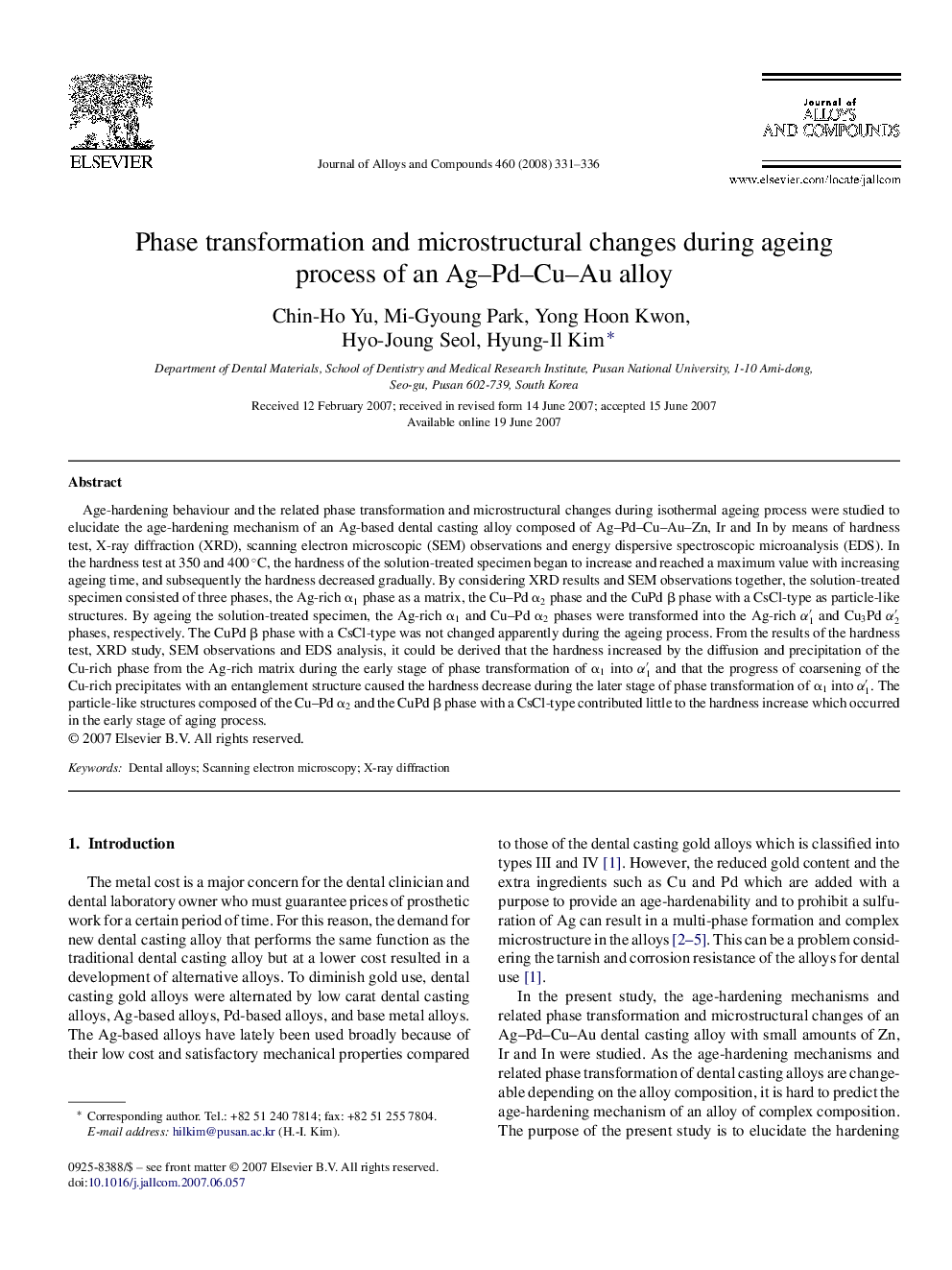| Article ID | Journal | Published Year | Pages | File Type |
|---|---|---|---|---|
| 1623904 | Journal of Alloys and Compounds | 2008 | 6 Pages |
Age-hardening behaviour and the related phase transformation and microstructural changes during isothermal ageing process were studied to elucidate the age-hardening mechanism of an Ag-based dental casting alloy composed of Ag–Pd–Cu–Au–Zn, Ir and In by means of hardness test, X-ray diffraction (XRD), scanning electron microscopic (SEM) observations and energy dispersive spectroscopic microanalysis (EDS). In the hardness test at 350 and 400 °C, the hardness of the solution-treated specimen began to increase and reached a maximum value with increasing ageing time, and subsequently the hardness decreased gradually. By considering XRD results and SEM observations together, the solution-treated specimen consisted of three phases, the Ag-rich α1 phase as a matrix, the Cu–Pd α2 phase and the CuPd β phase with a CsCl-type as particle-like structures. By ageing the solution-treated specimen, the Ag-rich α1 and Cu–Pd α2 phases were transformed into the Ag-rich α′1α′1 and Cu3Pd α′2α′2 phases, respectively. The CuPd β phase with a CsCl-type was not changed apparently during the ageing process. From the results of the hardness test, XRD study, SEM observations and EDS analysis, it could be derived that the hardness increased by the diffusion and precipitation of the Cu-rich phase from the Ag-rich matrix during the early stage of phase transformation of α1 into α′1α′1 and that the progress of coarsening of the Cu-rich precipitates with an entanglement structure caused the hardness decrease during the later stage of phase transformation of α1 into α′1α′1. The particle-like structures composed of the Cu–Pd α2 and the CuPd β phase with a CsCl-type contributed little to the hardness increase which occurred in the early stage of aging process.
